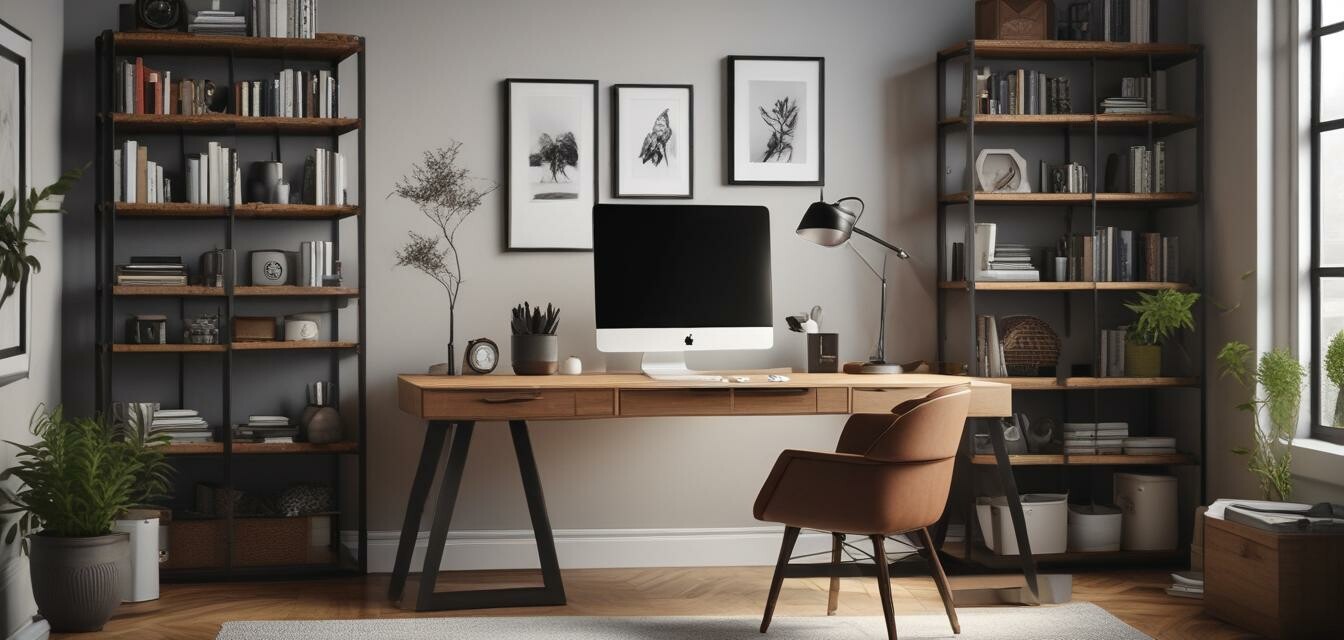
How Remote Work is Redefining Office Furniture Design
Key Takeaways
- The rise of remote work has significantly impacted the design of home office furniture.
- Flexibility and functionality are now top priorities for modern office setups.
- Materials and styles are evolving to reflect a balance between aesthetics and practicality.
- Understanding current trends can help you create a conducive workspace at home.
- Ergonomic solutions are becoming essential to enhance productivity and comfort.
With the surge in remote work, the landscape of office furniture design is undergoing a remarkable transformation. As people adapt to working from home, the emphasis has shifted from traditional office setups to creating flexible, functional, and aesthetically pleasing work environments. This article explores how the remote work trend is reshaping the design and functionality of office furniture, from innovative ergonomic solutions to stylish decorative accessories.
The Shift in Office Furniture Design
Prior to the rise of remote work, most office furniture designs centered on corporate environments. However, the increase in remote jobs has prompted manufacturers to rethink their approach. Here are some notable changes:
| Traditional Design Elements | Modern Home Office Design Elements |
|---|---|
| Fixed cubicles and desks | Flexible and modular furniture arrangements |
| Heavy materials | Lightweight and eco-friendly materials |
| Standard colors | Vibrant and customizable color options |
| Focus on functionality only | Combination of function and aesthetic appeal |
Emphasizing Ergonomics
One significant trend reshaping office furniture is the focus on ergonomics. As workers spend long hours at home desks, the demand for ergonomic solutions has skyrocketed. Here are key ergonomic furniture perspectives:
- Adjustable desks that accommodate standing and seated positions.
- Chairs designed to provide back support and encourage good posture.
- Keyboard trays and monitor stands that promote comfortable working angles.
The shift towards ergonomic furniture helps reduce strain and enhances productivity, making it an essential component of modern home offices.
Dual-Purpose Furniture
In studios and smaller spaces, furniture that serves multiple purposes is becoming increasingly popular. Here’s why dual-purpose furniture is effective:
| Dual-Purpose Furniture Examples | Benefits |
|---|---|
| Desk that converts to a dining table | Maximizes space and functionality |
| Bookshelves that double as room dividers | Enhances privacy while providing storage |
| Sofa beds for guest sleeping arrangements | Provides seating and sleeping space |
Emerging Styles and Materials
The aesthetic appeal of office furniture has also evolved. Designers are now incorporating various materials and styles to fit diverse taste preferences:
- Natural woods and sustainable materials appeal to eco-conscious consumers.
- Modern designs embrace clean lines and minimalistic concepts.
- Bold colors and unique patterns reflect personal expression and creativity.
Maintaining a Balance Between Style and Efficiency
The modern home office should reflect a balance between style and efficiency. This can be achieved by:
- Choosing furniture that matches your personal aesthetic while serving your work needs.
- Incorporating decorative accessories that enhance workspace organization and ambiance.
- Understanding your workflow and selecting pieces accordingly, such as ergonomic chairs and spacious desks.
To gain more insights on optimizing your workspace, check out our Buying Guides.
Pros
- Increased comfort and productivity with ergonomic designs.
- Versatile furniture options that fit various work and living spaces.
- Stylish alternatives that match personal aesthetics and improve mood.
Cons
- Cost might be higher for specialized ergonomic furniture.
- Some dual-purpose furniture may compromise aesthetics for functionality.
- Trends may change quickly, leading to potential buyer's remorse.
The Future of Office Furniture Design
As remote work continues to thrive, it’s likely that we’ll see more innovative designs and products emerging to meet the demands of a changing workforce. Companies are likely to invest in:
- Smart furniture that integrates technology for enhanced productivity.
- Sustainable materials that fulfill eco-friendly objectives.
- Adaptive designs that cater to various work styles and preferences.
For ongoing insights into the latest trends, make sure to follow our News and Trends section.
Conclusion
In conclusion, the remote work boom is refocusing the boundaries of office furniture design. By putting importance on flexibility, ergonomics, and aesthetics, individuals can create workspaces that are both comfortable and stylish. The demand for home office furniture continues to evolve, and understanding these trends will ensure that you stay ahead in crafting a productive workspace.